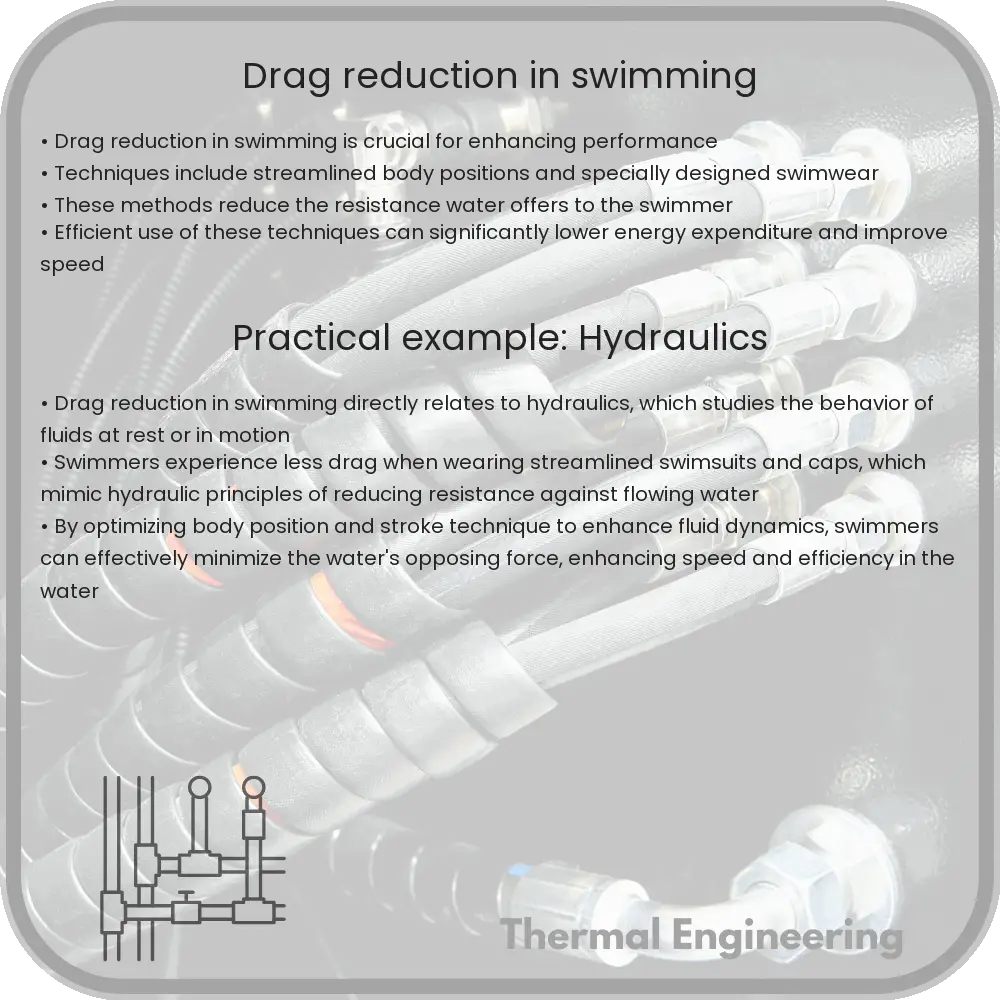Learn about drag reduction techniques in swimming, including advancements in swimsuit design and swimming techniques to enhance performance.

Understanding Drag Reduction in Swimming
Swimming is not just an art; it’s a science that involves understanding and manipulating physical properties like drag to enhance performance. Drag reduction is a crucial concept in competitive swimming, where minor enhancements can lead to significant performance improvements. In this article, we’ll delve into the basic principles of drag and explore some engineering strategies used to reduce drag in the sport of swimming.
What is Drag?
Drag, in fluid dynamics, is a force that opposes the motion of an object through a fluid. This fluid can be either a liquid, such as water, or a gas, such as air. In swimming, drag plays a critical role because swimmers need to overcome this resistive force to move efficiently through the water. Drag in swimming can be categorized into three main types:
- Frictional drag: This arises from the friction between the swimmer’s body and the water and is influenced by the smoothness of the swimmer’s skin or suit.
- Pressure drag: Also known as form drag, it occurs due to the shape of the swimmer moving against the water’s flow. The difference in pressure in front of and behind the swimmer contributes to this type of drag.
- Wave drag: This type appears when the swimmer’s body moves near the surface, creating waves. Wave drag becomes significant especially at higher speeds and near the water’s surface.
Engineering Strategies for Drag Reduction
Several strategies can be employed to decrease drag, thereby enhancing a swimmer’s speed and efficiency in the water. These include both technique improvements and equipment enhancements:
- Swimming Techniques: Swimmers are trained to adopt specific body positions and movements to minimize drag. Streamlined body positions, where the body is aligned in a straight line, help in reducing the surface area exposed to the flow, thus reducing pressure and frictional drag.
- Swimsuit Design: Modern competitive swimwear is designed with fabrics that reduce frictional drag by being smoother and more compressive. These suits can also help in containing the body in a more hydrodynamic shape, thereby reducing form drag.
- Swim Cap and Goggles: Swimming caps made of latex or silicone can smooth out the hair and head shape, minimizing wave and frictional drag. Similarly, well-fitted goggles can reduce the frontal area exposed to the flow, helping to decrease both pressure and frictional drag.
- Improved Stroke Technique: Refining the stroke technique can significantly reduce drag. Techniques such as the ‘high elbow’ in freestyle minimize the arm’s frontal area exposed to water, reducing pressure drag.
Measuring and Analyzing Drag in Swimmers
To optimize performance, it’s crucial to measure and analyze drag for individual swimmers. This is typically done using computational fluid dynamics (CFD) models, tow-tank testing, or through the use of velocity meters during training. By understanding how different factors affect drag, coaches can tailor training and technique correction to maximize a swimmer’s efficiency and speed.
Conclusion
Drag reduction is a multifaceted area of study in swimming, intertwining elements of physics, engineering, and biomechanics. By employing various technological and technique-based strategies, swimmers can effectively reduce drag, leading to significant improvements in speed and performance. As research advances, ongoing innovations in swimwear design and swimming techniques continue to push the boundaries of what is possible in competitive swimming.
The pursuit of lower drag is not just about faster times; it’s about understanding and harnessing the principles of fluid dynamics to optimize human movement in water. This intersection of science and sport not only elevates athletic performance but also enhances our understanding of the physical world.